Installation and Maintenace Trail Artificial Grass
Installation and Maintenance Video
Installation and Maintenance Manual
Index
1. TRAIL ARTIFICIAL GRASS INSTALLATION
2. TRAIL ARTIFICIAL GRASS MAINTENANCE
1. TRAIL ARTIFICIAL GRASS INSTALLATION
MATERIALS REQUIRED

Artificial grass can be installed indoors and outdoors.
1 – Make sure the base is dry, clean and free from deformation or vegetation.
2 – For indoor installation, unroll the grass in the area where it will be installed 24 hours before installation so it returns to its flat shape.
3 – Plan the installation carefully and take all measurements. Use the X-Acto knife to cut the rolls to the required size. Leave a small space to make sure it fits properly and you don’t have shorter tips.
4 – For outdoor installation on solid foundations, we recommend that the base has a drainage system for water run-off.
5 – For even surface installation, place the rolls with the grass facing in the same direction.
6 – Before beginning installation, check the application conditions of the glue you’re using. The conditions for preparing the bicomponent glue can be found later in this manual.
Note: For easier cleaning on balconies and terraces, we recommend installing the rolls with the grass facing the drainage and/or sanitation channels.
Mounting depends on the base. For:
SOLID BASE (CEMENT)
INSTALLATION
7 – Lay the strips of grass in the area to be floored.

8 – Then lift up the sides of the rolls and use a spatula to spread the glue on the floor. Gradually lower the sides to stick the grass to the ground.
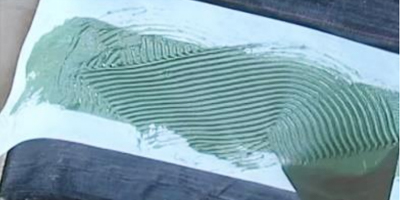
9 – Make sure the joints of the different rolls fit properly together for a smooth, continuous installation with no visible joints. Repeat this step with each roll of grass.
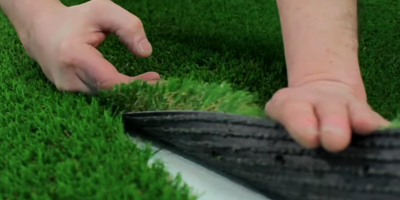
10 – When all the rolls are joined at the sides to form a single flooring mat, set the perimeter. This done by applying glue to the ground at each end of the flooring mat.
11 – Put heavy objects on top of all the joints for 24 hours to make sure the grass fully sticks to the base.
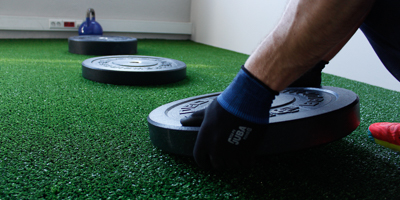
12 – After 24 hours, remove the weights and brush the grass in the opposite direction to make it more visually appealing.
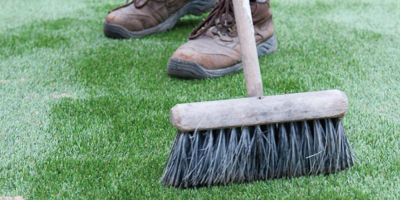
Note: In small spaces such as balconies, your grass can be installed without sticking it down. You can stick it down at a later date if you want to.
Double-sided tape can be used indoors. Simply put tape on the floor in a zig-zag pattern around the perimeter.
Then just peel off the yellow tape and gradually stick the roll to the ground. For each square metre of artificial grass, you’ll need 3 linear metres of double-sided tape.
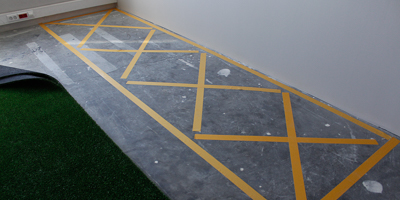
LOOSE/COMPACT BASE (GRAVEL, DIRT)
MATERIALS REQUIRED
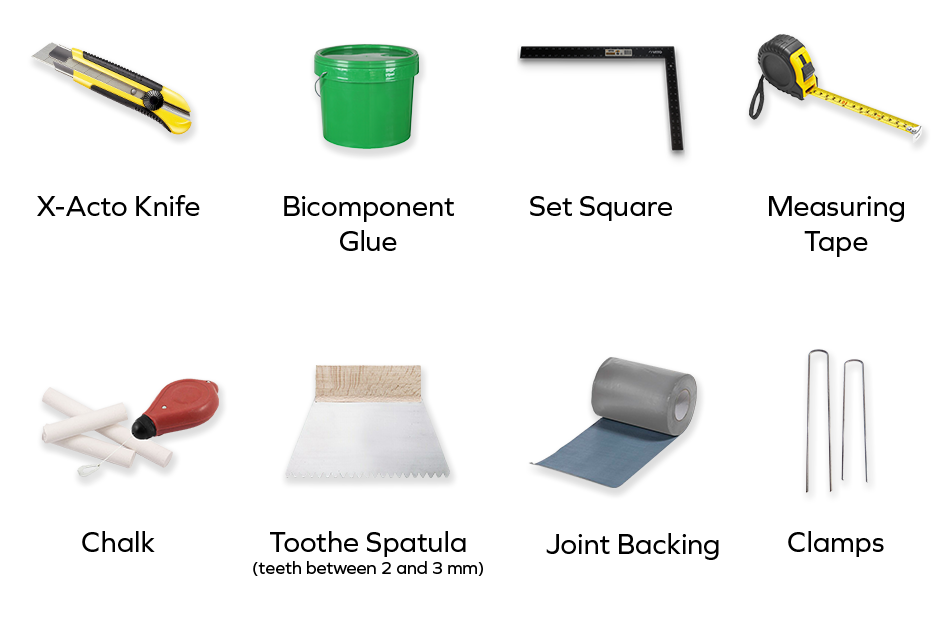
INSTALLATION
7 – Lay the strips of grass in the area to be floored.

8 – Fold the sides of two strips of roll and wipe them clean.
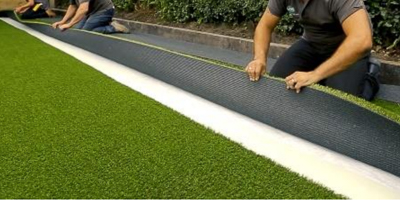
9 – Place the joining fabric in the space between the two strips. Use weights to keep the fabric and the sides of the grass together. Don’t forget that the waterproof side of the fabric should be facing downwards. The waterproof side is entirely smooth and resembles plastic.
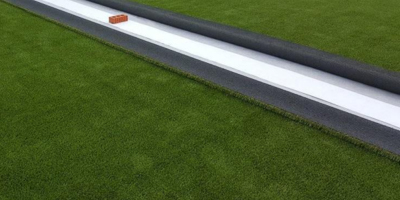
10 – Apply the glue to the fabric and then glue the sides of the grass, ensuring they are properly positioned so that no joins are visible.
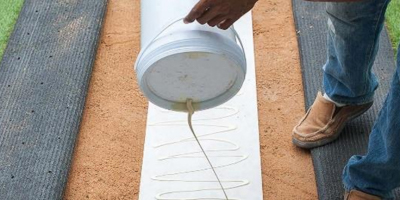
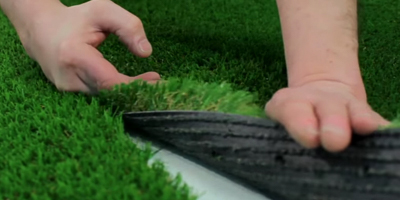
11 – Repeat steps 8, 9 and 10 for the other strips of grass.
12 – To set all the grass, place fastenings around the flooring perimeter, every 30 centimetres.
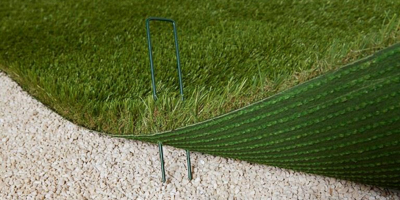
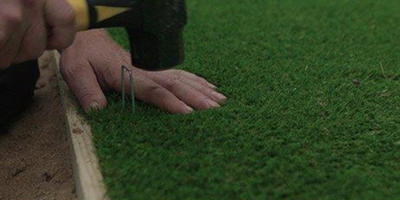
13 – Put heavy objects on top of all the joints for 24 hours to make sure the grass fully sticks to the base.

14 – After 24 hours, remove the weights and brush the grass in the opposite direction to make it more visually appealing.

GLUE PREPARATION
You need around 1kg of glue per m².
Glue has two components: resin and a catalyst. Mix them well and begin the installation immediately.
When ready, the glue can be used for 20 to 25 minutes. After, you can no longer use it for the installation.
Application should be done at a room temperature of between 15 and 25ºC and should never drop below 0ºC.
2. TRAIL ARTIFICIAL GRASS MAINTENANCE
If glue has been used to stick the flooring down, wait 3 days before cleaning with water to allow optimal glue adhesion.
Outdoors, use a broom to clean any rubbish from the surface. This ensures your grass does not suffer from wear and tear. For greater hygiene, use a hose with running water and pH-neutral detergents, which can be found in any supermarket.
In addition to sanitation, if you have outdoor grass, it’s important to water it occasionally to keep it cooler, especially in summer.
Indoors, use a vacuum cleaner to regularly clean any rubbish from the surface.
For greater hygiene, use a mop together with pH-neutral detergents, which can be found in any supermarket.